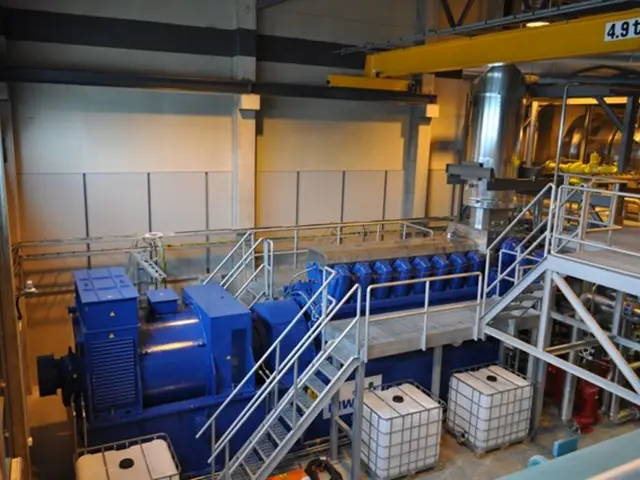Nickel's expansion is stagnant
The global finance market is experiencing a series of shifts and trends that are shaping its future. Here's a rundown of the latest developments in the market.
South Africa and Russia dominate the production of platinum group metals (PGMs), but increased production in these countries is facing hurdles due to a challenging investment climate and geopolitical risks.
On the other hand, the copper market is grappling with a shortage of copper concentrate, leading to limited supply on the global market. This scarcity is exacerbated by a roughly 5% decrease in Chinese production and the shutdown of a large mine in Indonesia.
Valeria Bagishvili, Senior Analyst at Gazprombank's Center for Economic Forecasting, predicts that copper may face a long-term deficit due to growing demand from the electric vehicle and renewable energy sectors.
The copper market is currently witnessing rising prices, primarily in anticipation of a Fed rate review. However, experts like Dmitry Orekhov, Managing Director of the NCR rating agency, foresee a trend towards reduced copper stocks by September 2025.
The platinum market has been in deficit for the fifth consecutive year, with a deficit of 848,000 ounces expected in 2025. The company Sibanye Stillwater has increased production of PGMs in Russia, contributing to the rise in production in this region.
Palladium, a PGMs, is primarily produced in Russia and South Africa, with significant reliance on Russian operations. Sibanye Stillwater operates in South Africa and the US but has involvement connected to Russian PGM supply chains, impacting regional production dynamics.
Platinum group metals have been on the rise since May this year due to reduced supply from South Africa, increased jewelry demand, and strong internal combustion engine vehicle production in the first half of the year. Palladium price expectations have risen by 10-13% to $1,07-1,15 thousand per ounce, while platinum price expectations have risen by 23-35% to $1,2-1,3 thousand per ounce.
Demand for platinum, palladium, and rhodium continues to grow from the automotive industry, with a new driver emerging - the development of hydrogen energy. Moreover, these metals are increasingly being considered as protective assets, similar to gold.
Overproduction has been identified as the main obstacle preventing nickel prices from returning to a stable upward trend for several years. Mikhail Shulgulin, chief analyst at the Investment Analysis Center of "Rosgosstrakh Life", states that world market supply has exceeded demand by approximately 200,000 tons over the past two years.
BCS predicts that nickel prices in 2025-2027 will be 2-4% lower than previously expected, with prices ranging from $15,2-15,6 thousand per ton. Shulgulin also notes that the share of nickel in cathode chemistry has fallen from 96% in 2015 to around 50% due to an increase in the use of lithium-ion batteries.
Aluminum price expectations have risen by 6% to $2,6-2,7 thousand per ton. The copper price forecast for 2025-2027 has been increased by 4% to $9,65-10,14 thousand per ton. BCS has raised their price forecasts for copper, aluminum, and platinum group metals until 2027, but revised down their nickel price expectations.
In conclusion, the global finance market is undergoing significant changes, with trends such as increased demand for copper and PGMs from the electric vehicle and renewable energy sectors, and the decrease in the share of nickel in cathode chemistry due to the rise of lithium-ion batteries. As always, market dynamics are complex and subject to various factors, making it essential for businesses and investors to stay informed.
Read also:
- The Cost of Speech is Zero, True Strength Lies in Unity
- Aiming to simplify the move towards cleaner automobiles, the newly established ministry plans to take direct action with Pannier-Runacher, Létard, and Vautrin at the helm.
- "The imperfect yet essential documentary, "Planet of the Humans," raises challenging and uncomfortable inquiries"
- Exciting Escapades of Tintin







